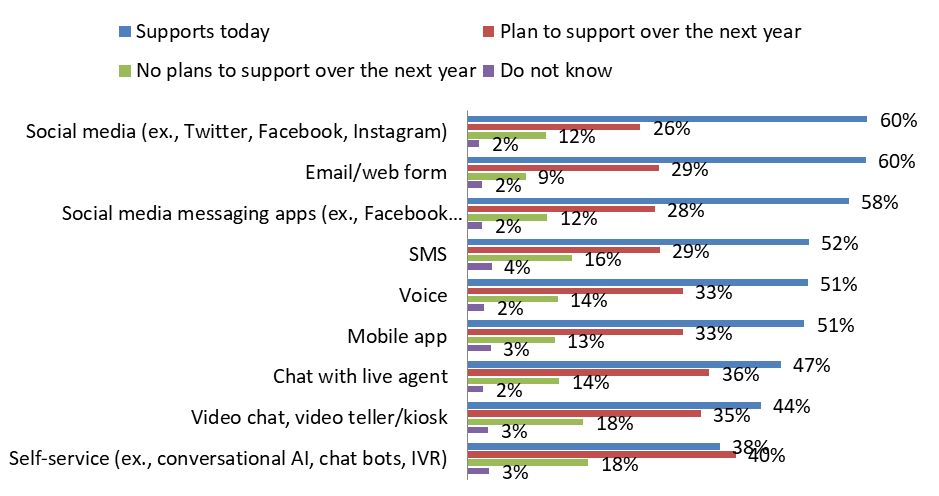One key source that can no longer be overlooked and must be integrated into insights is social media—a crucial communications platform during the pandemic. Many industries struggled to keep contact centers operating smoothly, and customers flurried to social media channels for the information they needed. In 2021, social media platforms such as Facebook, Instagram, and others saw a growth of 35%.1 These platforms allowed for social interactions during lockdowns.
In turn, social media emerged as a key digital transformation investment in the past year.

Marketing opportunities, buyers’ influence, and direct payment capabilities escalated the need for retailers to integrate this channel into their digital transformation strategy. According to the 2022 Frost & Sullivan IT Decision-Maker customer survey, retailers are taking social media seriously, with almost 90% implementing social media analytics or planning to invest in the solution by 2023.
It’s mission-critical for retailers to make an emotional connection with customers to ensure brand loyalty. As a starting point, consumers must have a positive association with the retailer by using all of this data to utilize the customer’s history, predict their behavior, and proactively solve their problems. Personalization is crucial for emotional connection, but this becomes difficult as consumers seek more privacy and governments roll out regulations to protect them.
Ensuring trust is crucial for retailers that want to create an emotional connection. Retailers tend to keep customers loyal by protecting all of the data they share, guaranteeing secure transactions, staying transparent when problems arise, and being prepared for a crisis.
An emotional connection or a negative experience is easily and often shared on social media. Generation Z and younger will continue to spend two to three times more money shopping on social media platforms than other generations. They are swayed by posts from platform-savvy companies, celebrity endorsements, influencers, YouTube reviews, and TikTok. Every generation is influenced by peers who hit the “like” button about a product or service. Moreover, a single post that goes viral can do good, and negative social media chatter can be damaging. Social media has intensified the speed by which consumer products and their attributes (e.g., features, styles, and colors) gain or lose popularity. Retailers, small to large, have had to fine-tune their social media skills and listen to chatter to stay relevant.
Companies that cannot act on customer feedback quickly are unlikely to survive in this fiercely competitive and customer-driven environment. The key to success is discerning which experiences should be directed to each consumer so they feel genuinely connected to a brand, resulting in the improved net promoter and customer satisfaction scores needed to achieve the top corporate objective set forth by many companies in 2022.
Footnote
1 eMarketer